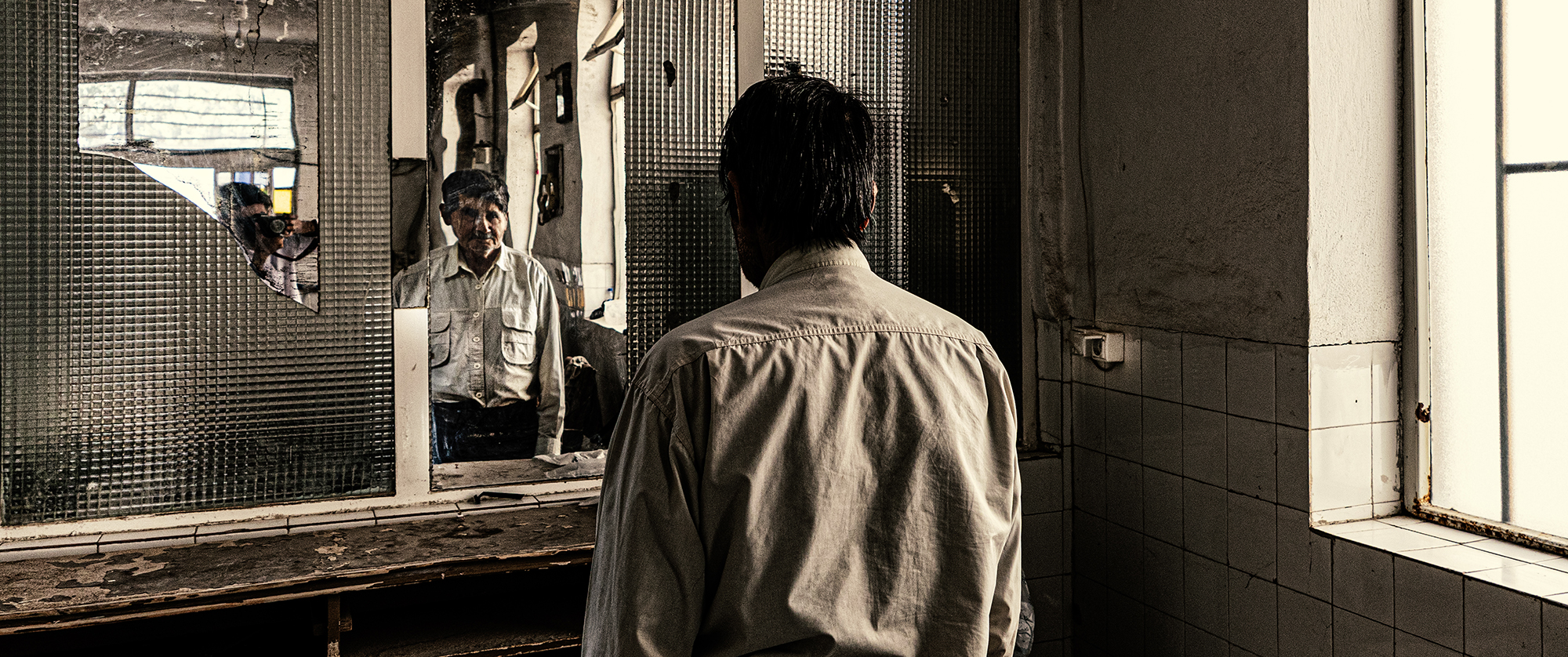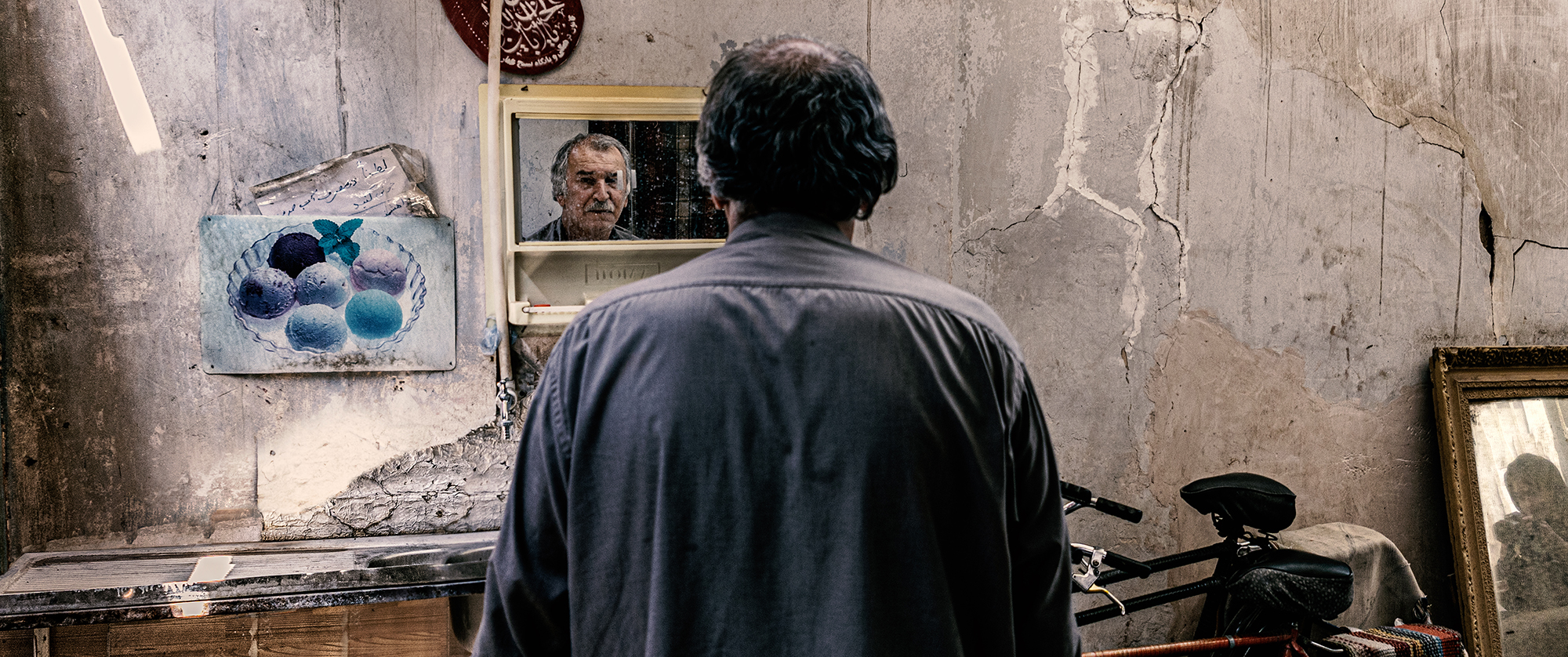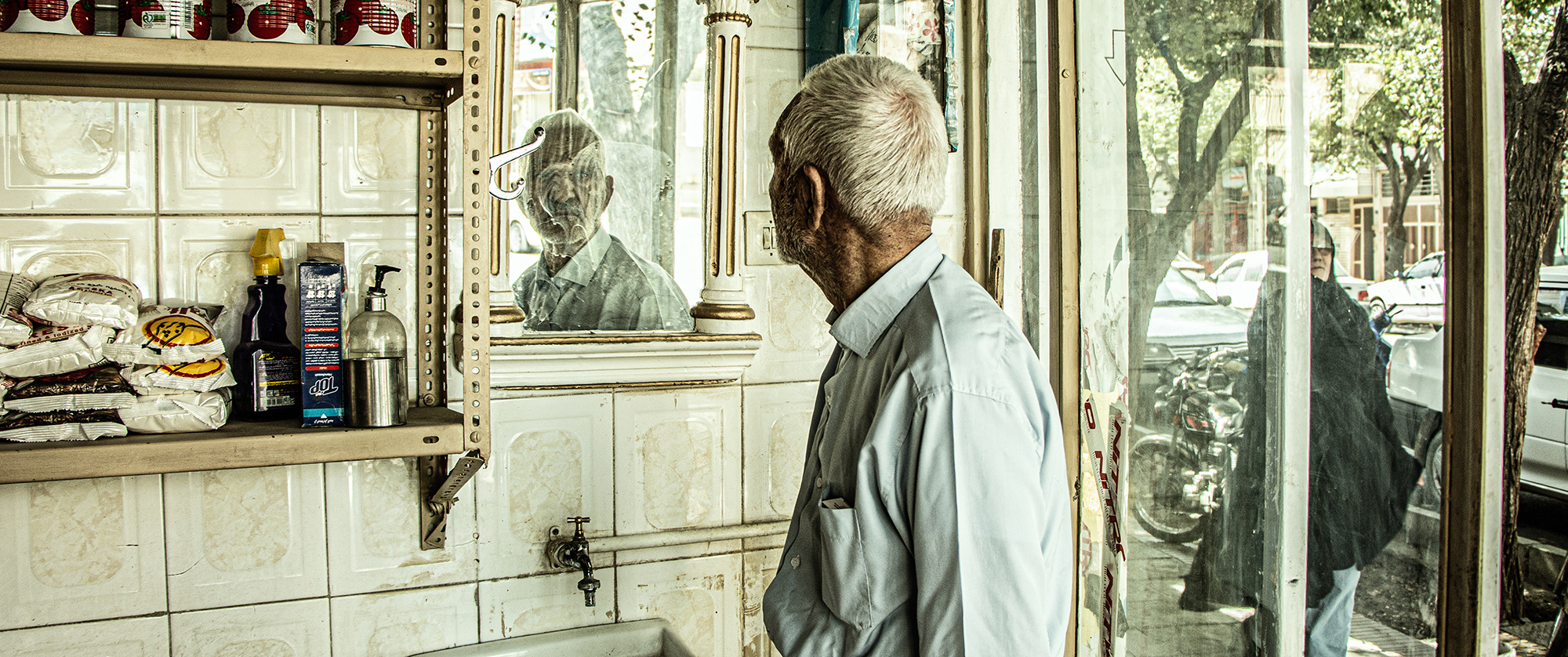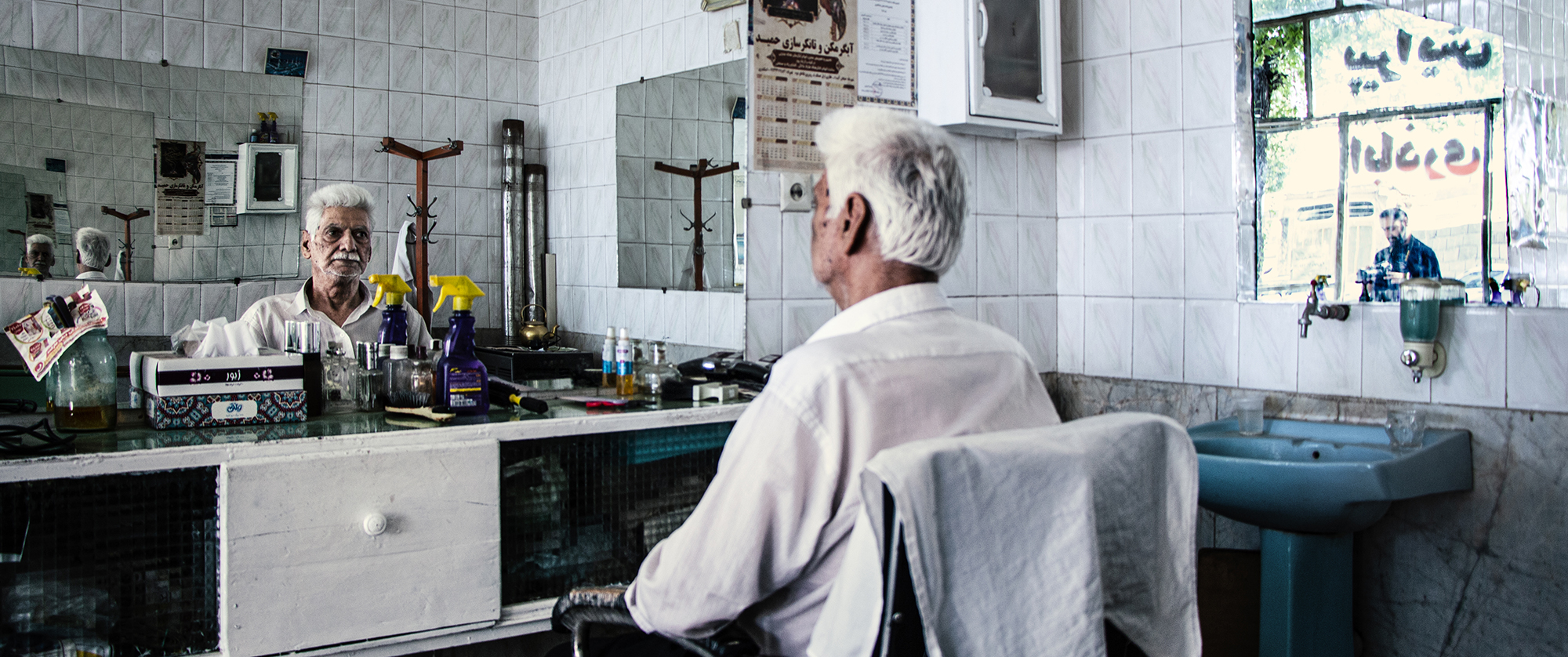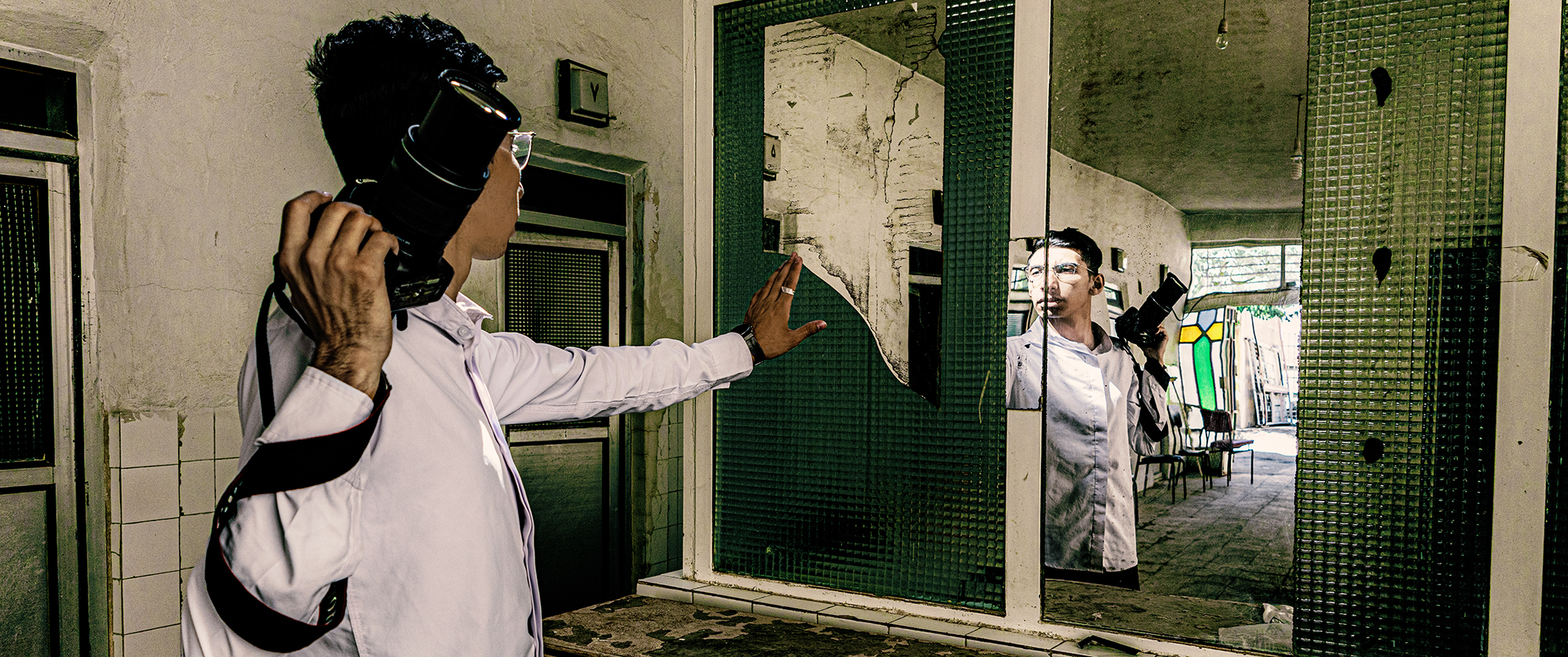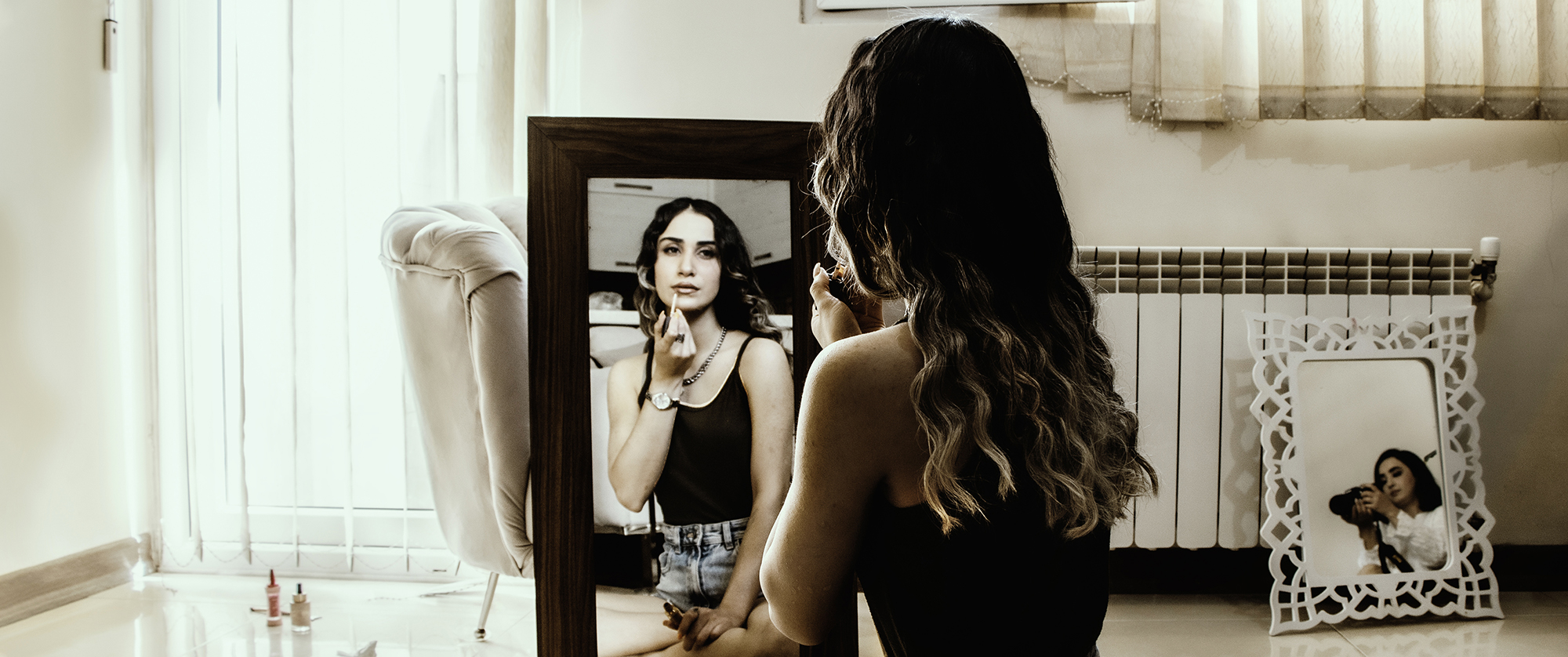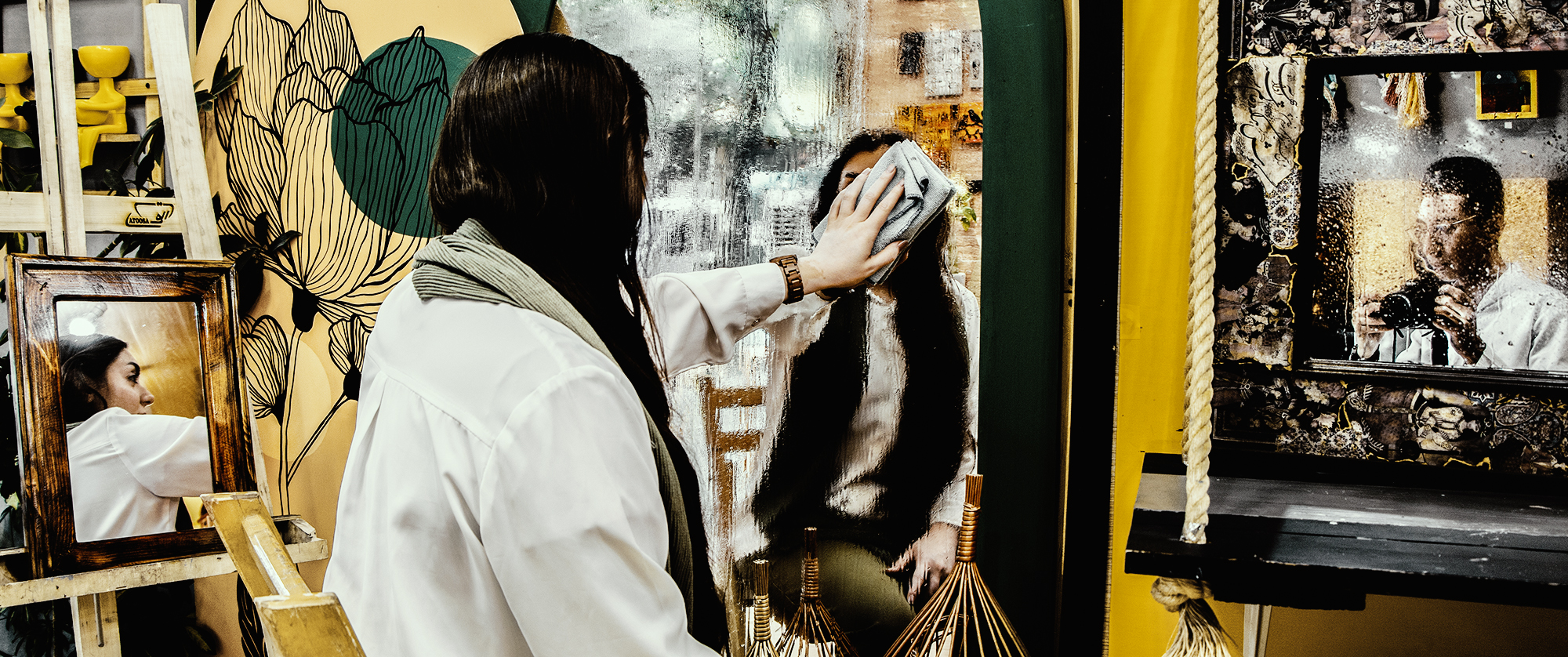Sudenlly Lost in the Mirror
A Photography Collection By Aliakbar Sayah
| Preface |
” The Painted Look Can Be Full of Memories.” Hans Belting
In my first encounter with Dutch and Flemish portraits, I came across a question that kept me away from portrait photography for several years, searching for the answer. “In a portrait of a person, do we see a face or a mask of a face?” In these paintings, like the works of Johannes Vermeer or Jan van Eyck, each person has several faces. First, the main face that looks at the viewer, second, the reflection of his face in the mirror or window glass or polished surfaces that can reflect the face, and finally, the presence of the painter’s face in the background or in details in the painting that look at the portrait owner. I sought to create a connection between them, and in this labyrinth of faces, each one created a different identity for me than before. Portraits allow me to penetrate the subject, and the most fascinating part of it is the difference in facial expressions. In documentary photography, I have often experienced that when people are in front of the camera, they adopt imitative poses and distance themselves from their true selves, as Roland Barthes would say, trying to get closer to the image they have created in their minds.
This challenge reached its peak when I watched Bergman’s Screams and Whispers, when Karin, along with her maid, changes clothes in front of the multiple mirrors on the dressing table and stares at her reflection in them. I did not know that I was watching several different people or different aspects of the same person. The gaze is the most important achievement of these faces. Whether it is the viewer looking at the portrait, the person looking at the imaginary viewer,or finally, the person looking at themselves in the mirror. As Hans Belting calls this action dialogue, saying, “A human image is born that can perform the drama of the gaze.” The Image within Image was also a tradition, I learned from the same traditions of seventeenth-century painting. A capability that can provide viewing of multiple faces of a person and even the face of the painter (author) and give hypertextual details to the work as if each frame is a quote from the author and as Stoikitsa says: “The mirror (frame) can be considered a representative of an absent reality.”Image within Image allows the viewer to discover more and preserve different layers of the subject, in fact, these multiple frames can reveal as much as they can hide. Also, faces have preserved memories that are tangible but inexpressible, and the Image within Image makes part of this memory decipherable.
